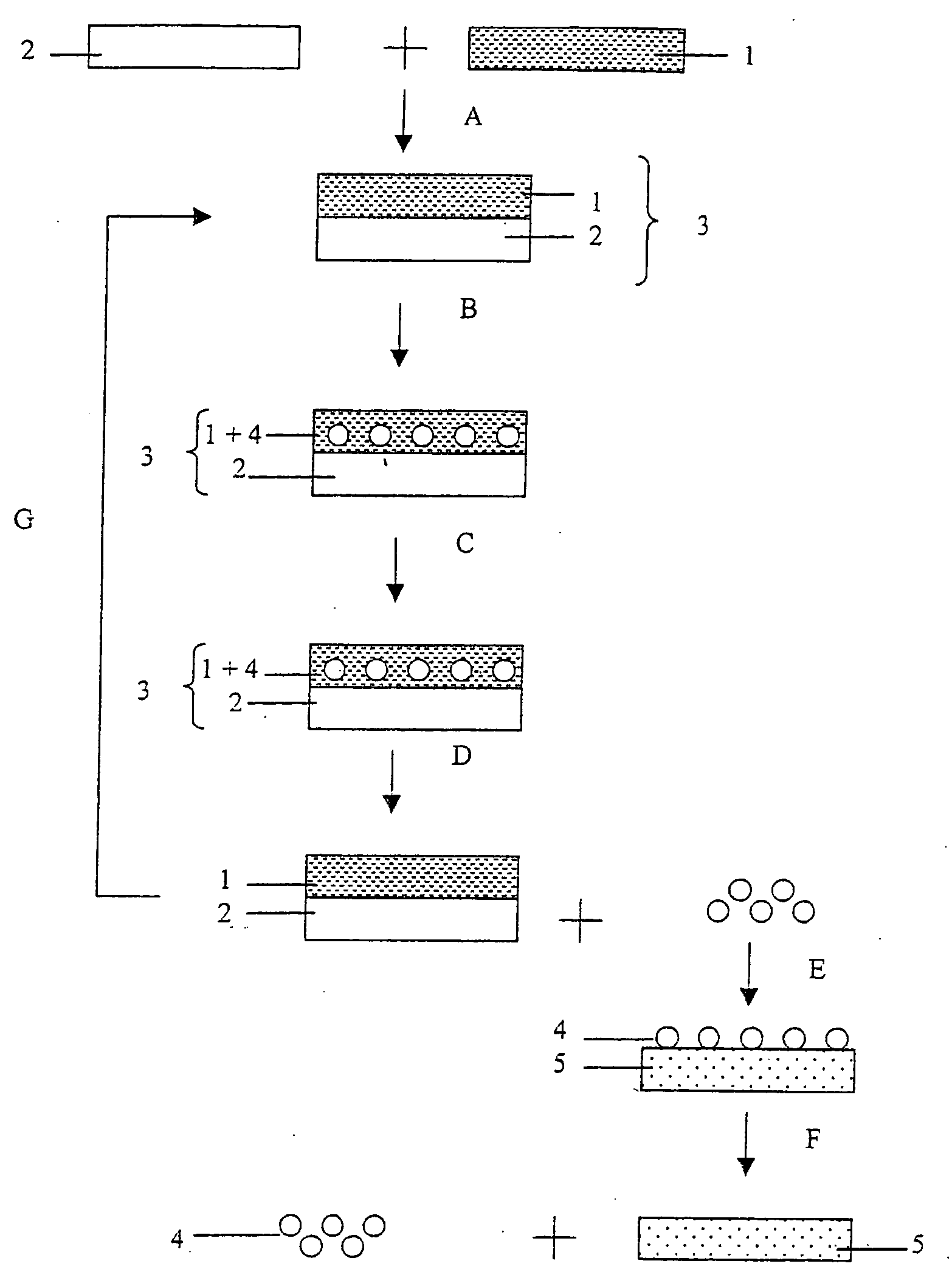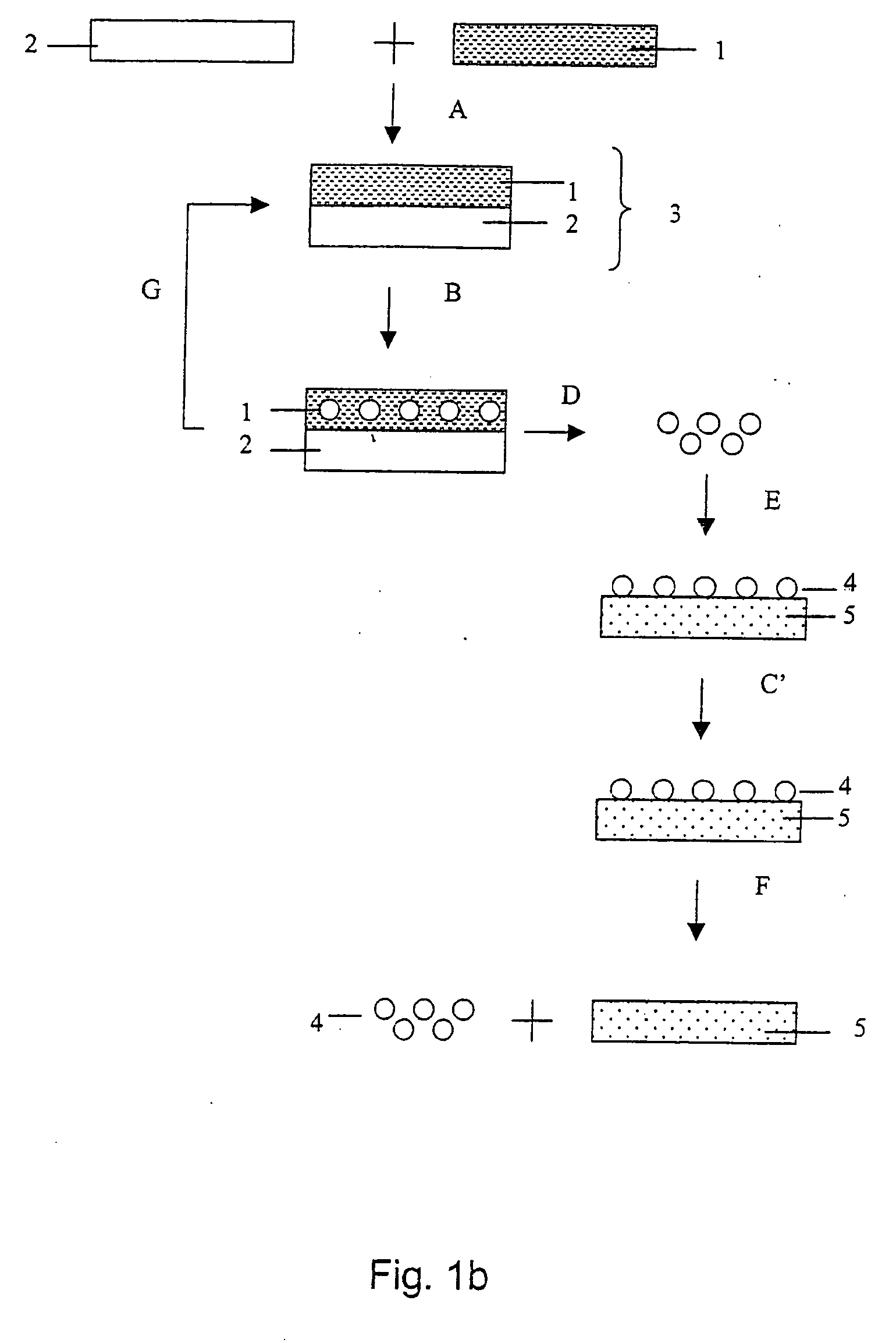Method and device for production of radio-isotopes from a target
- Summary
- Abstract
- Description
- Claims
- Application Information
AI Technical Summary
Benefits of technology
Problems solved by technology
Method used
Image
Examples
first embodiment
FIG. 1a diagrammatically describes the various steps of the process for producing a radioisotope according to the present invention.
Reference is made to the preparation of the radioisotope 103Pd, referenced 4, from a target 3 comprising rhodium 103Rh, the isotope precursor, referenced 1, by irradiation with a proton beam.
At the start, it is first a matter of preparing the target 3 comprising the precursor 1 of the radioisotope 4 (step A—preparation of the target). To do this, a deposit of Rh is placed on a metal plate 2, which is, in the present case, a copper plate. This is usually performed by electrolysis, so as to obtain a deposit whose thickness is such that the proton beam used during the irradiation (for example a 14 MeV proton beam) loses at least three quarters of its energy in the target. However, other deposition techniques, for instance evaporation, and plasma deposition techniques (direct current (DC), radiofrequency or microwaves) in vacuum or atmospheric plasma (pl...
second embodiment
FIG. 1b diagrammatically describes the various steps of the process for producing a radioisotope according to the present invention, in which the effusion step is performed on-line, i.e. directly in the irradiation chamber.
The making of the target (step A) is performed in the same manner as in the first embodiment. As shown in FIG. 3, a collection substrate 5 is installed in the irradiation chamber. It is therefore not necessary to extract target 3 in order to proceed to the effusion-collection. This device allows the irradiation and the effusion-collection to be performed simultaneously (simultaneous steps B, D and E). The energy required to heat the target is totally or partially provided by the accelerated particle beam. After irradiation, the collection substrate 5 is extracted from the irradiation chamber 10. The separation of the deposited palladium (step F) is then performed in the same manner as in the first embodiment. Target 3 can remain in the irradiation chamber 10.
FIG...
PUM
 Login to View More
Login to View More Abstract
Description
Claims
Application Information
 Login to View More
Login to View More - R&D
- Intellectual Property
- Life Sciences
- Materials
- Tech Scout
- Unparalleled Data Quality
- Higher Quality Content
- 60% Fewer Hallucinations
Browse by: Latest US Patents, China's latest patents, Technical Efficacy Thesaurus, Application Domain, Technology Topic, Popular Technical Reports.
© 2025 PatSnap. All rights reserved.Legal|Privacy policy|Modern Slavery Act Transparency Statement|Sitemap|About US| Contact US: help@patsnap.com



